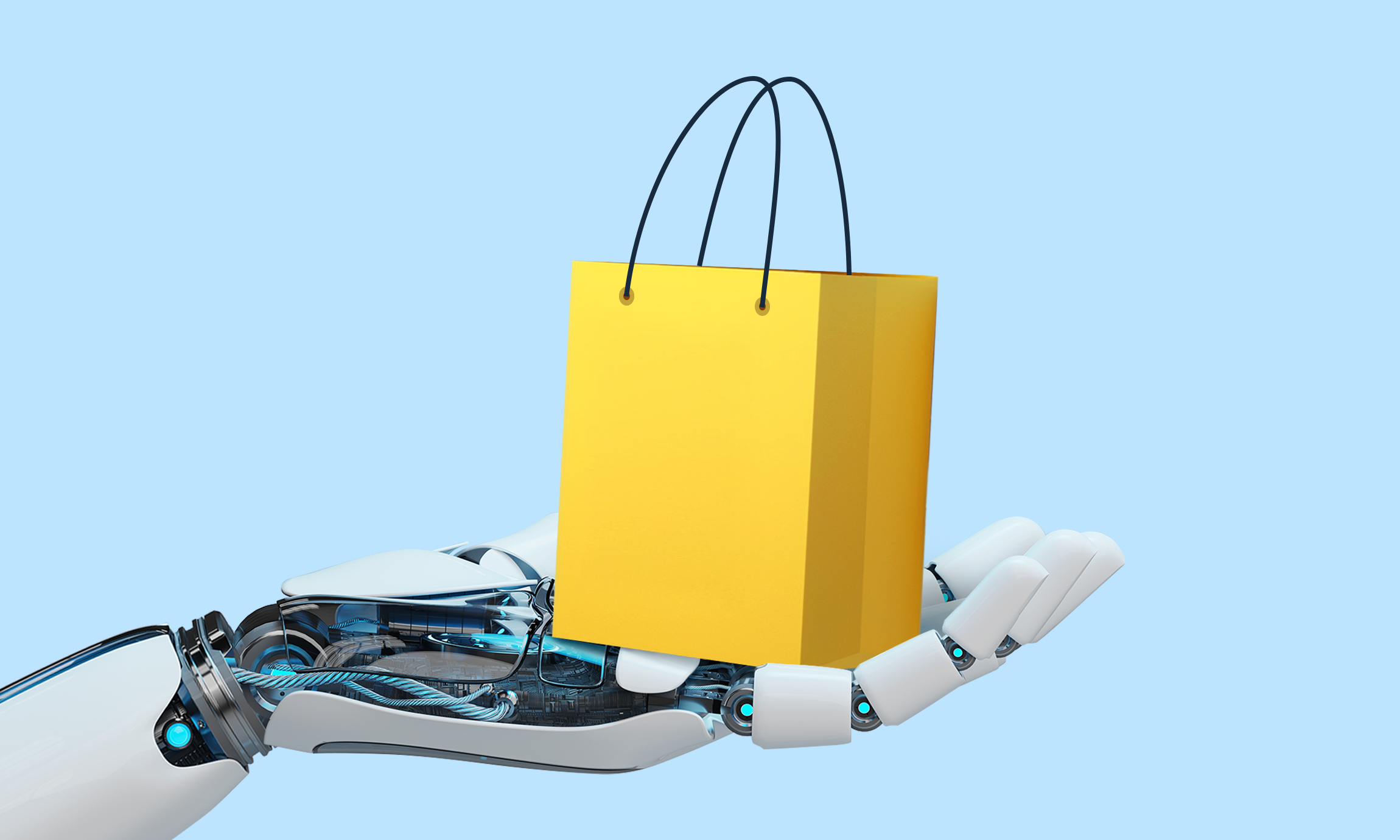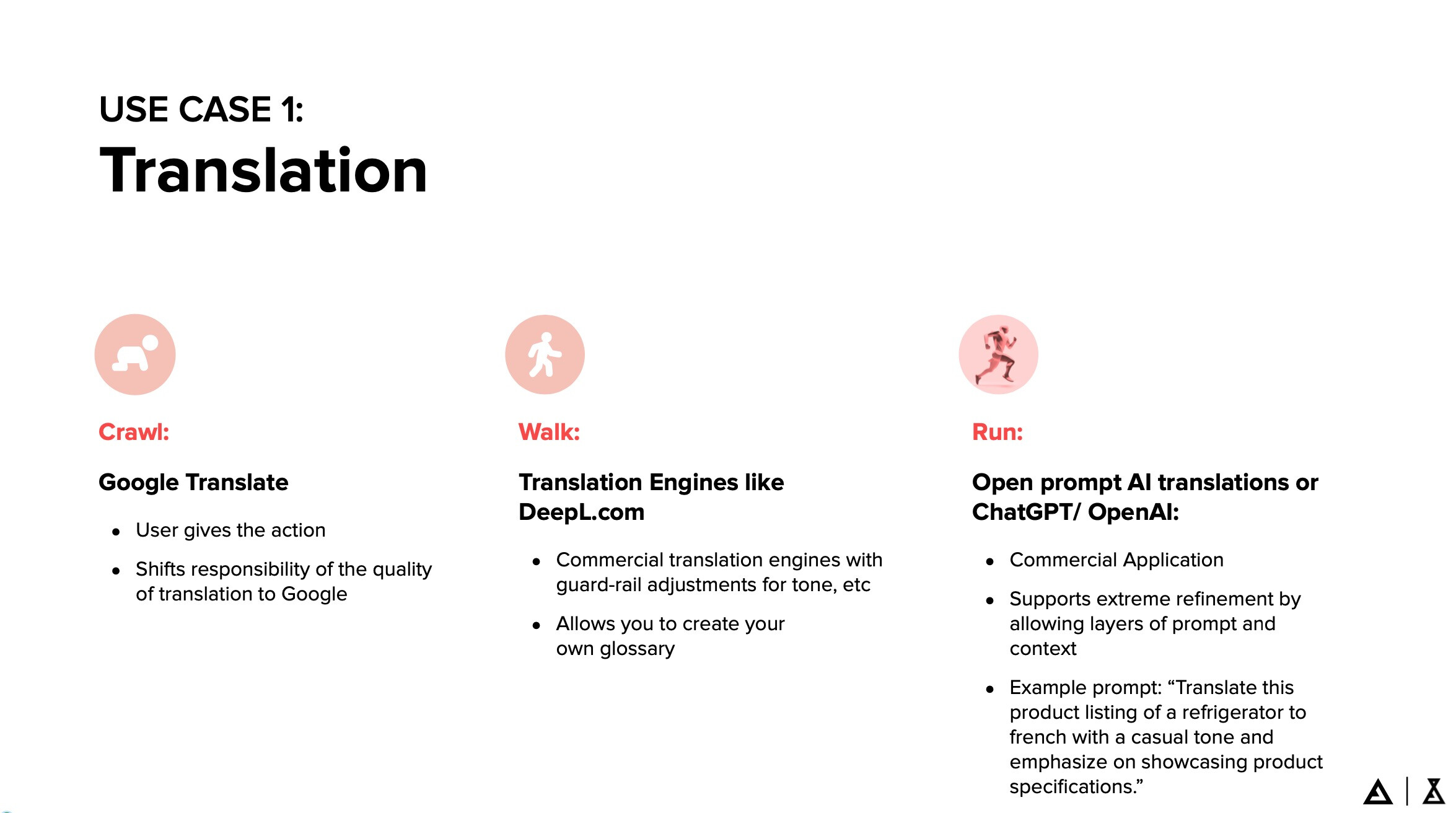
According to predictions by Juniper Research, retailers will invest $12 billion in AI this year up from 8.4 billion in 2022. “Things are moving incredibly quickly and changing fast — there’s a speed happening that you don’t often see,” Scott Michaels, Chief Product Officer of Apply Digital, announced at the beginning of “Leveraging AI for Retail Growth,” a webinar co-sponsored by commercetools, Contentful and Talon.One.

A digital innovation company focused on building products, platforms and commerce, Apply Digital helps clients overcome difficult challenges every day, and as Scott pointed out, “Retailers are feeling intense pressure right now to show they have capabilities in the AI area.”
Dan Berger, Delivery Partner at Apply Digital, joined Scott for an hour-long presentation to explore the current state of AI in the retail landscape, discuss a few of the best production-ready use cases and review AI-associated challenges and how to overcome them.
The State of AI
While both panelists agreed that the capabilities of AI open up a world of possibilities for retailers, Scott believes that at this point, it’s critical to “separate hype from actually usable deployable tech. There's a lot of stuff that looks super cool, but it's at that stage where when you actually go to implement it, you find out it’s a little bit still too rough around the edges.”
Scott cautioned attendees that with companies as big as Microsoft and Google struggling to keep a handle on AI, it’s prudent for retailers to crawl before they run. His take on the current landscape is that, “There are a lot of folks cautiously dipping their toes into AI. Some cases that are showing early wins are the ones being applied to augment existing human processes or human capabilities. I think typically legal and some other departments have some concern about anything running 100% autopilot right now, but what we're seeing is it augmenting human activity, where there’s still a person in the middle.”
Production-ready AI use cases
As a retailer, your core business isn’t developing technology. However, the good news is that your technology partners are already investing in AI, which enables you to leverage existing solutions to support business growth and success.
Translation is a great example of AI that has been around for a while. “It’s commercially agreed that it works well,” said Dan. He singled out Google Translate as a perfect starting point because it places the liability on Google rather than the retailer. Once you’re ready to take more ownership, he suggested DeepL. Of course, today many brands want their translations to sound as conversational as the original copy and that requires more advanced AI tools.
The battle cry again is, “Let your partners do the work for you.” For example, Contentful has already integrated with Open AI and offers a plug-in that does automatic translations for retailers. “Rather than trying to engineer this yourself, companies like Contentful are ahead of the curve.”

Retailer tip: Use translation for things like category listing pages, SEO text and product descriptions for longtail items. Scott points out, “You don't want to put this in a hero banner where you're using words like ‘mouthwatering Whopper’. It's not going to translate mouthwatering anywhere near how a person would use that the appropriate term in another language.”
Scott feels product description generation is a great AI use case. “It's very focused on presets and guardrails that help marketers drive conversion and kind of key points. By using something like ChatGPT, you can really, really get into tone setting and emphasis to a level that supports some pretty neat personalization — things like marketing emails, product recommendations, and widgets — where you are already probably applying machine learning to produce a product set or an audience. There's an opportunity now to adjust the content and copy to match that audience at a scale you just couldn't do before.”

Retailer tip: Use AI to create short descriptions tailored to your audience from the long descriptions in your PIM. “It [ChatGPT] is quite good at summarizing and being concise, taking long blocks of text and reducing it down to fit whatever length you have,” said Scott. Once you create a good base prompt, you can automate the flow and start building and storing short, portable, usable descriptions. “A/B test them to see if it actually adds value,” suggested Scott.
Dan feels image generation is probably the most exciting AI use case for retailers right now. “It's actually little to no cost to let your team play with it to understand what the limitations are.” He recommended trying out Photoshop’s Neural Filters and TikTok’s Bold Glamour filter offer before diving into image generation.

Retailer tip: Dan recommended using AI for backgrounds rather than generating branded assets at the moment, cautioning there are still multiple challenges and concerns. Plus, “You’re not going to get as good of a quality image as you would think. You’re much better off waiting for some of the problems to be solved than taking them on yourself.”
As with any innovation, AI comes with its own set of issues that need to be worked out. These include challenges related to learning the tools and understanding the legalities of using AI as well as concerns around security.
For example, uploading proprietary data such as information on a product not yet released is almost as if “you’re giving away the store” because that data becomes part of the AI model. Scott stressed, “This absolutely can happen unless you're running your own sandbox. Otherwise, when you use these tools, you’re putting it up for someone else to query.”
He also cautioned about the danger of copywriting infringement. “You ask for an image of a shopping cart, pretty generic; you just want to get the image out there. Once you really look, there’s an iPhone in there and obviously, Apple is going to be all over you. So you’ve got to watch for that.”
Dan advised that keeping humans in the loop is key to overcoming these challenges and ensuring you recognize high ROI from your investments. “It is absolutely a net positive in terms of time, production and quality, and it allows your humans to get to do more of the work that they like rather than drudgery. That’s really where this is headed.”
To get more insights on leveraging AI for retail and view demos of use cases, view the on-demand webinar video.